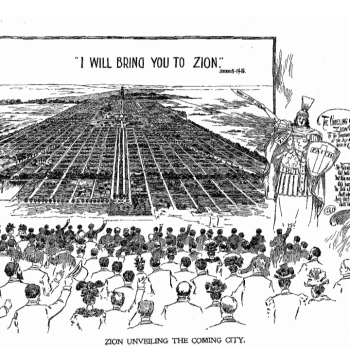Over the past two decades, the exponential advance of information-sharing and communication-oriented technology transformed and continues to transform everything from recipe-sharing to research. Since 1990, when I first entered the academic world, portable data storage technology evolved from state-of-the-art 5.25 inch, “high density” floppydisks, which stored 360 KB of data, to flash-drives the size of a tube of lip balm that can hold 128 GB of data. E-communication advanced from a green-font, UNIX-based e-mail system to the plethora of options available today.
The most obvious manner in which these developments have changed the field of history relates to pedagogy. Blackboard has emerged as a ubiquitous electronic course materials management system, expanding professors’ ability to provide course content and interact with students outside of the office and classroom. Programs like Turnitin help professors teach students about proper citation and originality as well as flagging cases of academic dishonesty. With its relatively new grammar-check feature, Turnitin even helps students refine their grammar and syntax.
Further, the information age is changing the way historians and other humanities professors think about the classroom. No longer is communication of content adequate to the teaching task. In the past, students literally had to travel to an academic institution in order to soak up content from faculty lectures and resources in the library. Today, such information is readily available to any student with an internet connection that knows how to use a search engine. Generally, these developments force us to rethink how we teach history. Specifically, they raise questions regarding the purpose of the classroom. If the classroom is no longer necessary to communicate content, what happens to the lecture, a staple of academic teaching for centuries? The “success” of MOOCs and other on-line teaching delivery systems only add to the need to rethink pedagogy as colleges, universities, and seminaries expand such offerings.
The manner in which these technological developments relate to teaching have received the most coverage in the news. Yet, these same developments have also changed the manner in which scholars perform historical research, which undergirds historical teaching, as well as the manner in which they gain first exposure to colleague’s new research. With the advent of scanners and OCR software, the subsequent implementation of digitization projects, and the emergence of databases cataloging historical material on-line opens up new possibilities for historians.
There is a positive, democratizing effect to all these trends. First, these technological advances can make expensive endeavors that used to require travel, more broadly accessible. Digitization and on-line archives provide broader access to primary source materials. Travelling in order to access necessary materials can be quite expensive and although there are many sources of travel funding, there are many more worthy impoverished graduate students (and professors) than there are travel grants available. As an example, travelling to Abilene, Kansas, for a week of research at the Eisenhower Presidential Library may be cost prohibitive for some cash-strapped East Coast graduate student, while online access to the Papers of Dwight David Eisenhower may fit within his or her budget.
Second, these trends make conferences—where original research often gets presented first—more accessible. Live streaming, blogging, post-conference vimeo, and other information delivery platforms provide scholars with access to important conferences in real or near real-time. For example, in January, I followed several sessions at the American Historical Association (AHA) Annual Meeting that were devoted to American Religious History via the excellent real-time tweets of David McConeghy, Arlene Sánchez-Walsh, and Ed Blum.
As another example, two weeks ago, even though my summer travel fund sits on empty, I checked on developments at the annual meeting of Mormon History Association (via hashtag #MHA2013) in Salt Lake City, Utah, while simultaneously following important discussions taking place at the Third Biennial Conference on Religion and American Culture in Indianapolis, Indiana. After the conference, Cara Burnidge and Chris Cantwell collected all the tweets related to the conference and chronologically ordered them in one central location via Storify. In doing so, they provided information about research, ideas, and interpretations offered at the conference just days after its conclusion. Although not polished, these efforts allow the ideas to begin percolating through the field, encouraging further discussion. In addition, tools like Storify provide a record of the immediate reactions of other historians to the ideas being promulgated. Although not a substitute for in-person attendance, these resources allowed me to keep abreast of new scholarship and insights being presented in my discipline.
Third, these technologies encourage collaboration. Whether digitizing, collecting data, tweeting a conference, or working together to Storify tweets after the fact, success in these efforts requires a significant amount of cooperation. In the case of data collection and digitization, the task is simply too large for a singular individual. In the case of live-tweeting a conference, a greater number of participants creates a richer, more multi-faceted representation of the events. In addition, in these endeavors, doctoral students and tenured professors—who may or may not even have met in the “real world”—work (virtually) side-by-side. In fact, in these new technologies, it may be the students who have to bring the professors up to speed.
*This is the first of two posts on this topic. The second, dealing with some of the advantages and potential pitfalls of on-line research, will be posted on July 3rd.












